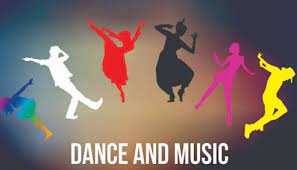Music and Choreography in Africa
Africa is a continent rich in cultural diversity, and music and dance play a significant role in the lives of its people. From traditional rituals to modern performances, music and choreography in Africa are deeply rooted in history, tradition, and storytelling. This article explores the importance of music and choreography in Africa, highlighting their cultural significance, diversity, and impact on society.
The Cultural Significance of Music and Choreography
Music and dance have always been an integral part of African culture. They serve as a means of communication, expression, and celebration. In many African societies, music and dance are used to mark important life events such as births, weddings, and funerals. They are also used to convey messages, preserve history, and pass down traditions from one generation to another.
One example of the cultural significance of music and choreography in Africa is the traditional dance of the Zulu people in South Africa. The Zulu dance, known as “Indlamu,” is performed during special occasions and ceremonies. It is characterized by rhythmic foot stomping, high kicks, and vibrant costumes. The dance not only entertains the audience but also serves as a way to honour ancestors and connect with the spiritual world.
The Diversity of African Music and Choreography
Africa is a continent with over 50 countries, each with its unique cultural traditions and music styles. The diversity of African music and choreography is vast, ranging from the energetic rhythms of West Africa to the melodic sounds of East Africa.
In West Africa, countries like Nigeria and Ghana are known for their vibrant music and dance styles. The Nigerian Afrobeat genre, popularized by Fela Kuti, combines traditional African rhythms with elements of jazz, funk, and highlife music. The accompanying dance moves, such as the “Shaku Shaku” and “Zanku,” have gained international recognition and are often seen in music videos and performances.
In East Africa, countries like Tanzania and Kenya have unique music and dance traditions. The Tanzanian Bongo Flava genre, influenced by hip-hop and reggae, has become popular across the continent. The accompanying dance styles, such as the “Odi Dance” and “Gwara Gwara,” have gained popularity through social media platforms and are often seen in music festivals and clubs.
The Impact of Music and Choreography on Society
Music and choreography in Africa have a profound impact on society. They bring people together, promote cultural identity, and contribute to social cohesion. In many African countries, music and dance are used as tools for social change and activism.
One notable example is the South African anti-apartheid movement in the 1980s. Music played a crucial role in mobilizing people and spreading messages of resistance. Artists like Miriam Makeba and Hugh Masekela used their music to raise awareness about the injustices of apartheid and inspire hope for a better future.
Furthermore, music and dance have economic implications in Africa. They contribute to the tourism industry, create employment opportunities for artists, and generate revenue through music festivals and performances. For example, the annual Cape Town International Jazz Festival in South Africa attracts thousands of visitors from around the world, boosting the local economy and promoting cultural exchange.
Music and choreography in Africa are not just forms of entertainment; they are powerful tools for cultural expression, communication, and social change. African music and dance diversity reflects the continent’s rich cultural heritage and contributes to its vibrant and dynamic society. From traditional rituals to modern performances, music and choreography continue to play a significant role in shaping African identity and connecting people across borders.


